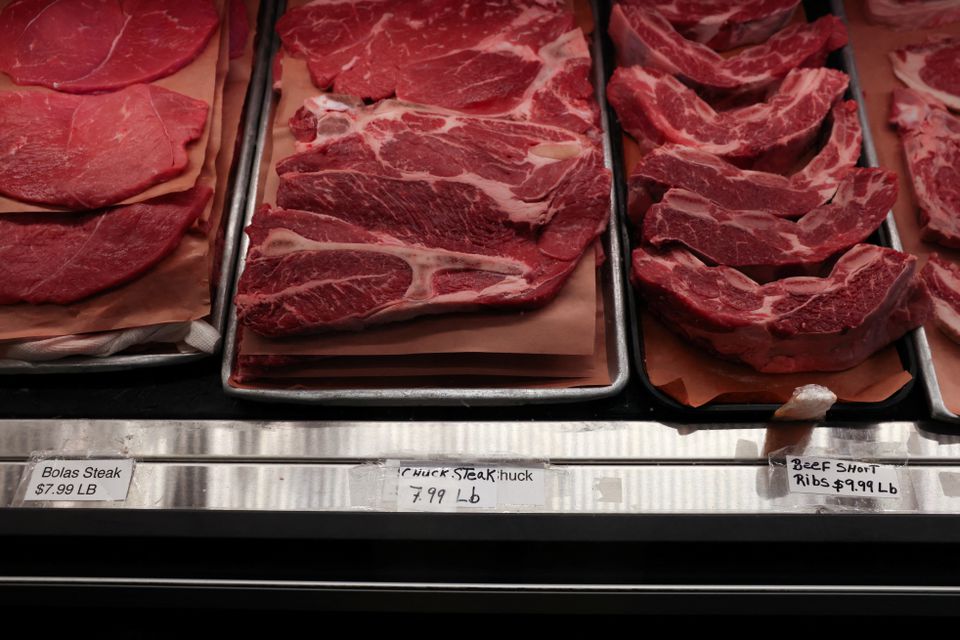Sharply lower beef production in 2023 is expected to more than offset higher pork, broiler and turkey output, resulting in lower total red meat and poultry production for the first time in nine years.
The US Department of Agriculture in its March 14 Livestock, Dairy and Poultry Outlook forecast total red meat and poultry production in 2023 at 107,144 million lbs, down 323 million lbs, or 0.3%, from 107,467 million lbs in 2022. If realized, it would be the first decrease in total red meat and poultry production since a 1.2% drop in 2014.
The drop from 2022 was attributed to sharply lower beef production. The USDA forecast 2023 beef production at 26,665 million lbs, down 1,625 million lbs, or 6%, from 28,290 million lbs in 2022, the lowest since 2017 and the first year-over-year drop since 2015. In contrast, 2023 pork production was forecast at 27,410 million lbs, up 1.5% from 2022, broiler production at 46,750 million lbs, up 1.2%, and turkey output at 5,585 million lbs, up 7%. Though up from 2022, pork production still would be the lowest since 2018 after two consecutive years of declines in 2021 and 2022.
The drop in beef production wasn’t a surprise as other data have been indicating falling cow and slaughter cattle numbers.
Cattle in feedlots of 1,000 head or more on March 1 were down 0.5% from Feb. 1 and were down 4.5% from a year earlier, the USDA said in its latest Cattle on Feed report. The number of cattle placed on feed during February was down 7% from February 2022, while the number sold during the month was down 4.9%, indicating tighter cattle and beef supplies in the coming months.
The USDA in its annual Cattle report issued Jan. 31 said the total US cattle inventory on Jan. 1 was 89.3 million head, down 3% from Jan. 1, 2022, the lowest since 2015 and the third lowest since 1952. The number of beef cows that had calved was down 4% from a year earlier, and the number of beef replacement heifers was down 6%.
Drought across major cattle raising areas contributed to the decrease in cow numbers, the USDA said. The USDA’s analysis of the March 14 US Drought Monitor showed 46% of cattle inventory was in areas experiencing some level of drought. Though improved from 62% on March 1, 2022, “low hay stocks are likely contributing to stronger-than-expected beef cow slaughter,” the USDA said.
Meanwhile, federally inspected dairy cow slaughter exceeded beef cow slaughter during the week ended Feb. 11 for the first time since April 2021. Dairy farmers have faced declining milk prices amid high feed prices for some time.













